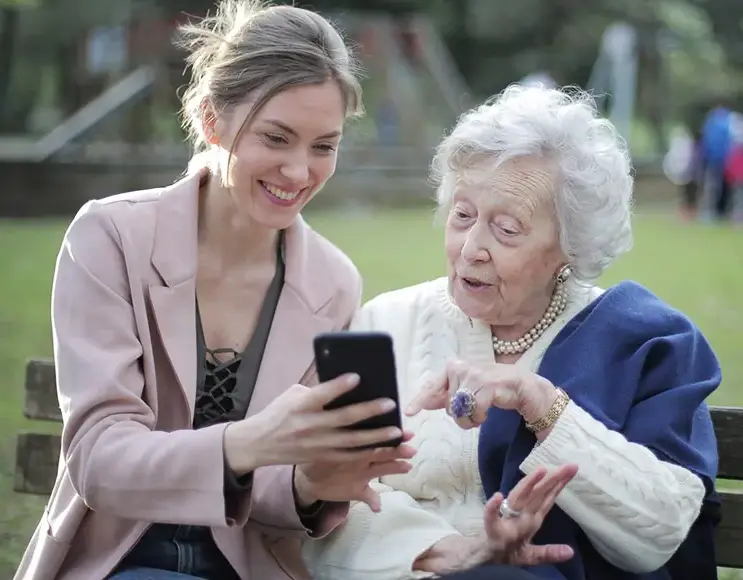Age-related sight loss affects around 79% of people over the age of 64 in the UK. Understanding the causes of eye disease is an important first step to seeking help.
Three Common Age-Related Sight Loss Conditions
Age-related Macular Degeneration (AMD)
is eye disease leading cause of sight loss worldwide. It is a progressive condition where ageing causes damage to the macula, the part of the eye that controls sharp, detailed central vision. This causes the central visual field to become blurry or to develop dark spots. It can also cause vision to become distorted where objects seem to be displaced and/or straight lines appear wavy.
Glaucoma
can occur at any age, but it is another leading cause of sight loss for people as they age. Glaucoma occurs when fluid build-up causes high eye pressure. This ultimately damages the optic nerve, the part of the eye that delivers visual input to the brain. Glaucoma is not easily detected. This is because its effects are so gradual and decreased vision is not noticeable until its later stages.
Cataracts
occur in older adults because, with ageing, the lenses in the eyes are prone to break down and begin to leak protein that clumps together. When untreated it causes blurry, hazy, or cloudy vision.
Taking the first Step to Overcoming Vision Loss
With vision loss can come many limitations. No longer being able to drive, read regular print, clearly see the faces of loved ones, and perform daily tasks with ease can be very discouraging for someone who has always been able to do these things.
Encouraging a positive outlook is the first step to overcoming any difficulty in life and it’s no different when facing sight loss. It’s important to understand that medical conditions do not define individuals and people have the power to choose to live meaningful vibrant lives regardless of their age or physical disabilities.
Support & Resources

From there, it’s a matter of finding real solutions to accomplish everyday goals. Staying connected to family and friends and getting involved with a support group can greatly ease this process and increase confidence in maintaining independence.
Fortunately, we live in a time where there are countless options available. Whether it’s services like ride sharing and personal shopping assistance, or assistive devices like magnifiers and money identifiers, or high-tech assistive technology like screen readers and a fully voice operated smart phone like the RealSAM Pocket, there are real solutions to adapting to life with sight loss.
By Guenivir Kendrick with help from ChatGPT
REFERENCES:
Facts about sight loss | Fight for Sight
Cataract. AOA.org. (n.d.). Retrieved March 18, 2023, from https://www.aoa.org/healthy-eyes/eye-and-vision-conditions/cataract?sso=y
Glaucoma. AOA.org. (n.d.). Retrieved March 18, 2023, from https://www.aoa.org/healthy-eyes/eye-and-vision-conditions/glaucoma?sso=y
Macular degeneration. AOA.org. (n.d.). Retrieved March 18, 2023, from https://www.aoa.org/healthy-eyes/eye-and-vision-conditions/macular-degeneration?sso=y


